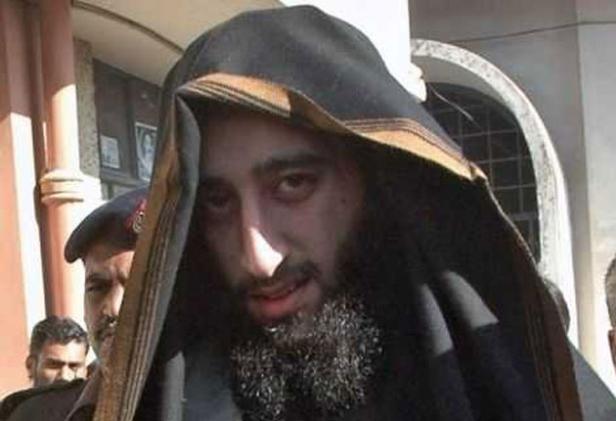
Rashid Rauf and the New York City Subway Bombing Plot
Publication: Terrorism Monitor Volume: 8 Issue: 18
By:

As security agencies pursue ethnic Pakistani suspects in the attempted Times Square bombing, another New York City bomb plot with connections to Pakistan and the U.K. is working its way through U.S. courts. The case involves an aborted attempt by natives of Pakistan and Afghanistan to mount suicide attacks on the New York subway system in September 2009 to mark the eighth anniversary of the 9/11 attacks.
In November 2009, British newspapers broke the story that counterterrorism officers had been responsible for the intelligence that had alerted the FBI to the cell around Afghan immigrant Najibullah Zazi, the plot’s main conspirator. New Scotland Yard officers watching an email account connected to an investigation codenamed “Operation Pathway” noticed some new traffic in September that apparently provided instructions for a New York bomb plot and passed the lead onto their American counterparts (Telegraph, November 9, 2009). The tip provided American agents with a crucial break in the Zazi plot, and led to a series of arrests, followed by admissions of guilt from both Zazi and co-conspirator Zarein Ahmedzay related to an attempt to carry out a bombing campaign in New York City (alongside a third suspect, Adis Medunjanin) on September 14, 15 or 16, 2009. [1]
That the link came from the United Kingdom has in retrospect proved to be somewhat appropriate, given the centrality in the plot of Rashid Rauf, the mysterious British-born ethnic-Pakistani who has been repeatedly referred to as a key operative in a series of plots targeting the West. According to prosecutors, the suspects met with Rashid Rauf and al-Qaeda operative Saleh al-Somali in Pakistan in August, 2008. The suspects allegedly told Rauf and al-Somali that they wished to fight in Afghanistan, but as holders of U.S. resident’s documents, the al-Qaeda operatives suggested it would be more valuable if they were to return to America to carry out mass casualty attacks in New York City (Daily Times [Lahore], April 24; Indo-Asian News Service, April 24). Saleh al-Somali is believed to have been killed in a December, 2009 missile attack by a CIA-operated drone (Dawn [Karachi], December 13, 2009). Rashid Rauf was similarly said to have been killed in a November, 2008 drone attack, but his death has never been confirmed and remains a subject of dispute (Guardian, November 25, 2008, September 8, 2009; Asia Times Online, August 11, 2009; Telegraph, September 10, 2009).
Rauf first came to notice in the wake of the August 2006 Transatlantic Airline plot in which a group of British nationals plotted to bring down eight or more airliners on transatlantic routes. After the plot was disrupted by British security services, Rauf was identified as one of the main planners. [2] Since then, Rauf has been connected to the July 7 and 21, 2005 plots against London’s public transport system. More recently, he was the alleged contact for a 2008 plot in which British security services believe a group of individuals were sent from Pakistan to carry out a terrorist plot in the U.K. (Telegraph, September 8, 2009). [3]
In September 2008, Pakistani forces intercepted Bryant Neal Vinas, an American-Hispanic convert to Islam who had trained at al-Qaeda camps and fought alongside the Taliban in Afghanistan. Vinas revealed he had been in contact with Rauf and may have ultimately been the source for information which led to his possible death by a Predator strike. It would also appear as though information from Vinas may have set events in motion that led to the discovery of the New York City subway plot. In December 2008, Belgian police arrested a group of individuals around Malika al-Aroud, the former wife of one of the men who killed Northern Alliance leader Ahmad Shah Massoud in 2001 (Radio Télévision Belge Francophone, December 11, 2008). Vinas admitted having met some of these individuals at al-Qaeda training camps. An informer amongst this group warned investigators that Rauf had dispatched a number of cells throughout the West. This led in the first instance to Operation Pathway, and later to the New York City plot (Sunday Times, April 12, 2009).
According to information released after Ahmedzay’s admission of guilt, Ahmedzay, Zazi, Medunjanin and a fourth conspirator (arrested in Pakistan in April, but as of yet unnamed) went to Pakistan in August 2008 (AFP, April 12). After being advised to carry out attacks in New York, the men underwent further training in Waziristan and discussed possible targets with al-Qaeda leaders. By July, 2009 they had returned to the United States and procured the necessary elements from beauty supply stores to build hydrogen peroxide-based bombs, similar to those used in the July 7, 2005 London bombings. By early September of the same year they were ready to carry out suicide operations. However, upon arriving in New York for the final stages, Zazi was alerted by a New York-based Afghan immigrant imam (Ahamad Wais Afzali) that he was under police surveillance (AFP, April 15). Realizing the FBI was alert to his activities Zazi quickly left the city to return to Denver. Soon afterwards, the FBI swooped in and the cell was rapidly rolled up. The revelations linked to Ahmedzay’s confession show how close they had come to carrying out a major terrorist attack. [4]
Notes:
1. Department of Justice Press Release, April 23, 2010, https://www.justice.gov/opa/pr/2010/April/10-ag-473.html
2. For the ringleaders, see https://cms.met.police.uk/news/convictions/three_men_found_guilty_of_airline_bomb_plot; and for the support group: https://cms.met.police.uk/met/news/convictions/airline_bomb_plotter_jailed_for_life
3. See also Lord Carlile’s report: https://security.homeoffice.gov.uk/news-publications/publication-search/legislation/terrorism-act-2000/operation-pathway-report
4. Department of Justice Press Release, April 23, 2010, https://www.justice.gov/opa/pr/2010/April/10-ag-473.html.





